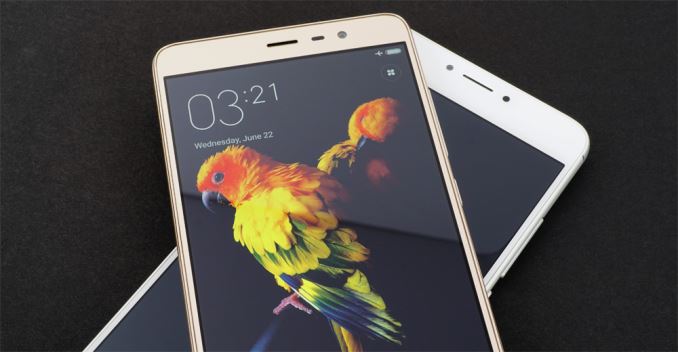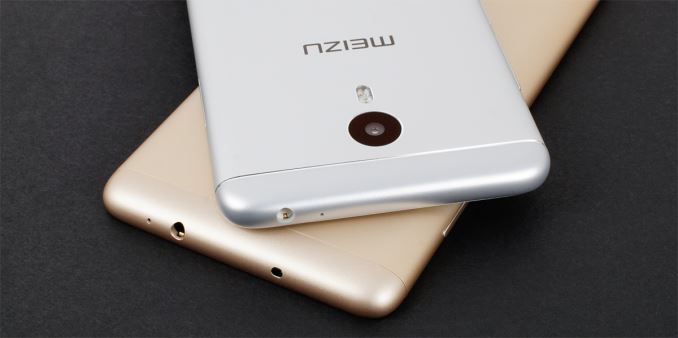The Meizu M3 Note vs. Xiaomi Redmi Note 3 Review: Comparing Notes
by Matt Humrick on July 12, 2016 8:00 AM EST- Posted in
- Smartphones
- Mobile
- Xiaomi
- Meizu
- Redmi
Final Words
I’ll admit it: I’m spoiled. I’m used to using the latest technology and playing with the recent flagship phones. I do not get many opportunities to review lower-cost devices, so I was not sure what kind of user experience to expect. After looking at the Meizu M3 note and the Xiaomi Redmi Note 3, I can say that both exceeded my initial expectations but in different ways and to different degrees.
The M3 note’s aluminum chassis is sturdy, with an attractive, symmetrical design. Additional machining details, such as the groove for the volume and power controls and the slots on the back that hide the endcap seams, are a nice touch shared with Meizu’s more expensive models. The M3 note also has a great fingerprint sensor, and Meizu’s Flyme OS includes some nice navigation features, like swiping up from the lower bezel to access recent apps instead of tapping a dedicated button.
The Redmi Note 3 and its Snapdragon 650 SoC easily outperforms other phones in its price range and approaches flagship numbers in some of our system performance tests. It cannot match the peak GPU performance of higher-tier SoCs, but its sustained performance is nearly the same once temperature forces the other GPUs to throttle frequency. Whether opening or switching apps, navigating the UI, scrolling in the browser, or working in apps, this phone feels fast. The Redmi Note 3 is a clear leader in performance per dollar.
Due in part to their larger-than-4000mAh batteries, both phones deliver excellent battery life, lasting more than 12 hours in our Wi-Fi browsing test—the longest of any phones we’ve tested—and nearly as long in PCMark. The M3 note’s battery life is generally a little better than the Redmi Note 3’s, but the latter remains close while delivering much better performance.
While there are positive elements for both phones, we need to be realistic. Neither phone delivers the same user experience or has the same feature set as more expensive flagships. In order to reach a lower price point, some compromises naturally need to be made. This becomes obvious as soon as their displays light up. Both panels are capable of reaching a respectable 450 nits max brightness and have good viewing angles, but black levels are subpar even among other phones in their class. Both panels also fail to cover the full sRGB gamut, reducing color accuracy. Their default calibrations also miss the target white point, giving the Redmi Note 3’s screen a blue tint and the M3 note’s a magenta hue. Both phones offer the ability to adjust white point, but only the Redmi Note 3 provides a setting that actually improves grayscale accuracy. Unfortunately, the Redmi Note 3’s poorly configured gamma leaves its screen looking dark with less shadow detail, which is most noticeable when watching movies or playing games.
Camera performance is another area where these two phones struggle. The Redmi Note 3 is clearly the better of the two, capable of capturing some nice looking images in good lighting. Its HDR mode is also effective, naturally brightening darker areas while maintaining color saturation and detail. As the lights dim, however, its performance drops. Like the M3 note and the other phones we tested in this price class, it produces noisy images lacking in detail. Even with good lighting, the M3 note’s images show excessive shot noise that noticeably degrades image quality. It also experiences issues with exposure and focus in certain conditions.
The M3 note is noticeably slower than the Redmi Note 3, but its performance is similar to other phones in its price range. People who primarily use their phone as a communication device—phone calls, email, messaging—or for working with lightweight apps—scheduling, note taking, web browsing—will likely find it to be fast enough. The M3 note can handle casual games, but it’s not capable of playing more demanding 3D titles.
At the beginning of this review I noted how similar the M3 note and Redmi Note 3 are on paper and wondered if this would translate into an equivalent user experience. The short answer is no. The Redmi Note 3’s superior performance and slightly better camera give it the edge. It just feels fast, much faster than its peers using octa-core A53 CPUs, which just are not going to be competitive at this price point anymore.
While the pace of innovation at the high-end naturally slows, the mid-range and low-end phones start looking more attractive. Flagship features and hardware continue to trickle down to lower price points, producing more-capable phones with better user experiences. Both the M3 note and Redmi Note 3 are evidence of this trend. Xiaomi’s introduction of the Redmi Note 3, however, goes even further, signaling a jump in capability that all new phones in its category will need to match.














79 Comments
View All Comments
Pissedoffyouth - Wednesday, July 13, 2016 - link
Yes, on my RN3 I see June patch levelImpulses - Thursday, July 14, 2016 - link
Very interesting.Pissedoffyouth - Monday, July 25, 2016 - link
July now and I have August patch level. Very fast.serendip - Wednesday, July 13, 2016 - link
Xiaomi are pretty good at updating the Android patch level for their developer ROMs. Their Chinese-market developer ROMs are updated weekly, whereas global developer ROMs with built-in Google Play get updated once every few months. Stable ROMs come out about once a quarter.You can get the best of both worlds by using custom ROMs from Xiaomi.eu that combine the features and updates of the Chinese-market developer ROM and built-in Google Play, with a lot of Chinese bloatware stripped out. I've been using these for my ancient Redmi Note (the first of the line!) for years without major issues.
One thing Xiaomi really suck at is updating the kernel. A lot of older devices are still stuck on KitKat and without kernel sources, we can't compile a bug-free Marshmallow release. Maybe it's a MediaTek thing not to release sources but whoever it is, they're not doing themselves a favor.
SyukriLajin - Thursday, August 11, 2016 - link
ironically, the very heavily customized MIUI have a waaay better monthly security patches update policy than a lot of those "almost stock android" from other manufacturer.tuxRoller - Tuesday, July 12, 2016 - link
The gpu is the consistent achilles of these chinese soc. If they would just up the gpu core count you'd end up with a far more balanced device.OTOH, the snapdragon looks to be pretty strong. Its gpu is better than I expected.
asfletch - Tuesday, July 12, 2016 - link
Thanks for this review Matt - reviews of Chinese phones usually gloss over the screen quality ("looks fine" etc), so nice to see AT putting them through the wringer.Re Redmi Note 3, the performance is really impressive. Do you know whether the black version still has a ridge around the edge of its glass? It looks like only the gold and white versions are afflicted with that - could just be less visible on the black ones though. Black one also conceals black border around the IPS panel better. I'd have bought one over the Galaxy Note 4 I ended up with if they'd just kept the removable battery of the RN2.
abcdravi - Wednesday, July 13, 2016 - link
Matt, just signed in to say this. This is a really good review!R0H1T - Wednesday, July 13, 2016 - link
@Death666Angel guess that depends on where you live then, in India there is no RN3/Pro with Helio likewise Le2 is also laced with SD652, therefore no Mediatek models here. Having owned the RN3 for just over 4 months, the SD650 one, I can safely say that it's by far the best VFM smartphone out there.Impulses - Wednesday, July 13, 2016 - link
Nicely done review...Also, -in before the HTC10/GTX1080 review whines-... :p